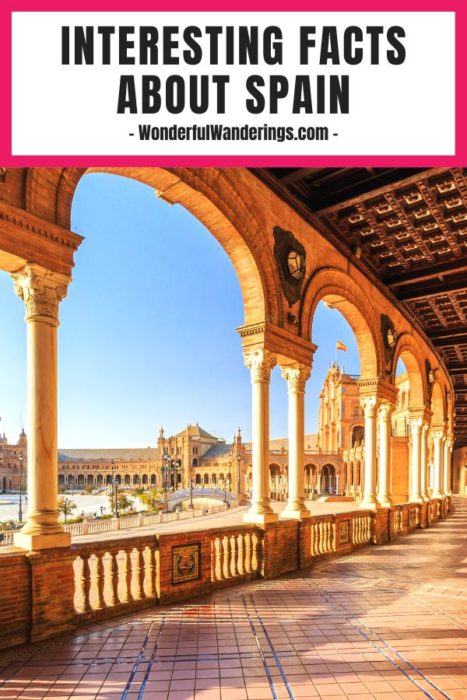How many interesting facts about Spain do you know?
It’s not just the basics like the capital city is Madrid or it’s part of the European Union. The country is full of rich history and is home to a magnificent culture. So there are tons of cool facts about Spain that aren’t talked about enough.
Whether you’re considering booking a trip to the country or need some trivia about Spain for an event, these are the fun facts you need to know.
Historical Facts About Spain
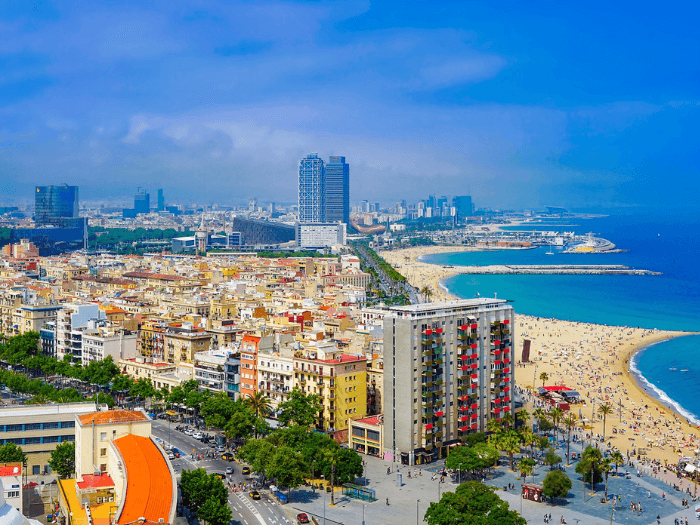
1. The name España, which is commonly used today to refer to the country of Spain, wasn’t adopted until the late 14th century. It was previously referred to as “The Spains” and included all the lands across the Iberian Peninsula and beyond.
After Ferdinand of Aragon and Isabella of Castile wed in 1469, the country united under a single monarchy and opted for a more unified identity and language.
2. As for the word “España,” it is believed to have originated from the ancient Greek word “Hesperia,” which means “land of the setting sun.” The Romans, who conquered the Iberian Peninsula in 218 B.C., latinized the term to “Hispania,” which is where the modern word Spain comes from.
But, some historians believe that the name has another origin. They think the phrase “España” comes from the Carthaginian word “Ispania,” which translates to “land of rabbits.”
The Carthaginians, an ancient civilization controlling parts of North Africa and Southern Europe, are believed to have chosen this name after discovering an abundance of rabbits in the area.
3. Spain has produced many notable figures throughout the centuries. Among them are two Roman Emperors, Trajan, and Hadrian. Trajan was born in Italica, located near present-day Seville. He became one of the greatest emperors in Roman history due to his military conquests, public works, and humanitarian policies.
Hadrian was born in Spain in 76 A.D. and became emperor in 117 A.D. He is known for his extensive building projects, including the famous wall that bears his name in Britain.
4. One of the more intriguing stories from Spanish history involves Juana la Loca, the second queen of unified Spain. She was the daughter of Ferdinand and Isabella, who are famous for sponsoring Christopher Columbus’s voyages.
Juana’s reign was marked by tragedy, as her husband, Felipe el Hermoso, died unexpectedly while traveling through Burgos in 1506. According to legend, Juana refused to be separated from his body and had it transported wherever she went, including on a long journey through Spain in a glass coffin. This earned her the nickname “Juana la Loca” or “Juana the Mad.”
5. Speaking of Christopher Columbus, he is often associated with Spain since he sailed under the Spanish flag during his voyages to the Americas. However, much of Columbus’s life remains a mystery. Nobody knows for sure where he was born, grew up, or even where he is buried.
It’s believed he was born in Genoa, Italy, but some think it could have been in Spain or Portugal. His final resting place is also a matter of dispute. Some claim he was buried in the Cathedral of Seville, while others say he was buried in the New World.
6. Spain has had many nicknames. It was once known as “the empire on which the sun never sets.” This is due to all the territories it conquered from the 15th to the mid-20th centuries, spanning Europe, the Americas, Africa, Oceania, and the Philippine Archipelago.
Spain’s wealth and power led to a golden age of art, literature, and culture, with influential figures such as Miguel de Cervantes and Diego Velázquez.
7. One of the more interesting facts about Spain is that it sold Florida to the U.S. in 1819 as part of the Adams-Onís Treaty. It also established the western border of the Louisiana Purchase and ceded claims to Oregon in exchange for U.S. recognition of Spanish sovereignty over Texas.
8. Another fact about Spain is that it remained neutral during World War I and II.
Although it was a major colonial power and world empire in the centuries leading up to these conflicts, its economy and political structure were weakened by the Spanish Civil War, which ended in 1939 with the rise of General Francisco Franco’s authoritarian regime.
9. The Spanish national anthem, “Marcha Real” (Royal March), is one of only four in the world with no lyrics. The lively and rhythmic tune has been used as a military march since the 18th century. Today, you’ll hear it primarily at sporting events and official ceremonies.
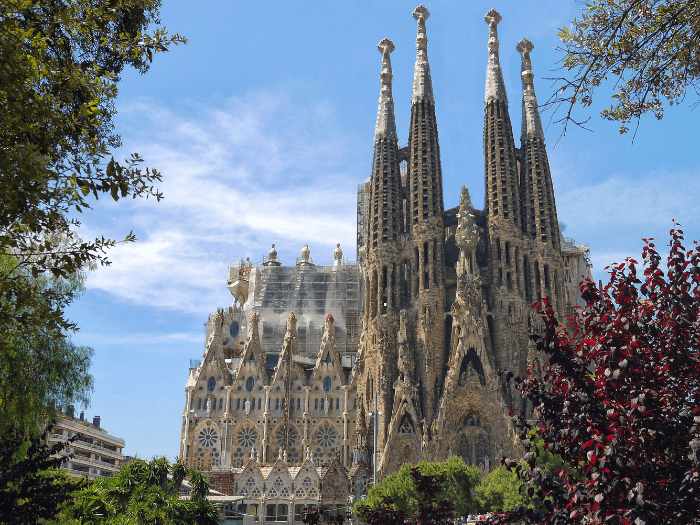



10. Were you aware that Spain has 47 UNESCO World Heritage Sites? It makes it the third-highest number in the world after Italy and China.
Some of Spain’s UNESCO World Heritage Sites include natural wonders like the Teide National Park in the Canary Islands and cultural landmarks like the Alhambra Palace in Granada.
One of the most famous is the Sagrada Familia cathedral in Barcelona. It is a masterpiece of modernist architecture designed by Antoni Gaudí.
11. While on the topic of structures, the oldest building in Spain is the Palacio de Santa María del Naranco. It was built in 848 and later converted into a church. This pre-Romanesque palace is in Asturias and is noted for its elegant and intricate decoration.
12. You can’t have a list of facts about Spain without mentioning King Juan Carlos I. He returned to the throne following the death of General Franco in 1975.
During his reign, he played a crucial role in Spain’s transition from dictatorship to democracy. He was widely admired for promoting peace and reconciliation in the country and worldwide.
13. It’s well known that Spain has produced some of the world’s greatest artists, including Diego Velázquez, Pablo Picasso, and Salvador Dali.
They are responsible for groundbreaking works that influenced the development of modern art. Their legacy continues to be celebrated in museums and galleries around the world.
14. Have you heard of the Romeria de Nuestra Señora de la Cabeza? It is a festival that Spanish people celebrate in honor of the Virgin Mary. It has taken place in Andalusia’s Sierra Morena region for over eight centuries.
The event features a procession of thousands of pilgrims carrying a statue of the Virgin Mary up the mountain to the sanctuary, which is located on the highest peak of the range.
15. The Sanctuary of the Virgin mentioned above is situated at the highest mountain in the Sierras. It is a stunning example of Spanish Baroque architecture.
The structure was built in the 18th century and includes statues of various saints. The sanctuary is illuminated during the festival, and Spanish people and pilgrims gather around it to sing and dance.
Food Facts About Spain
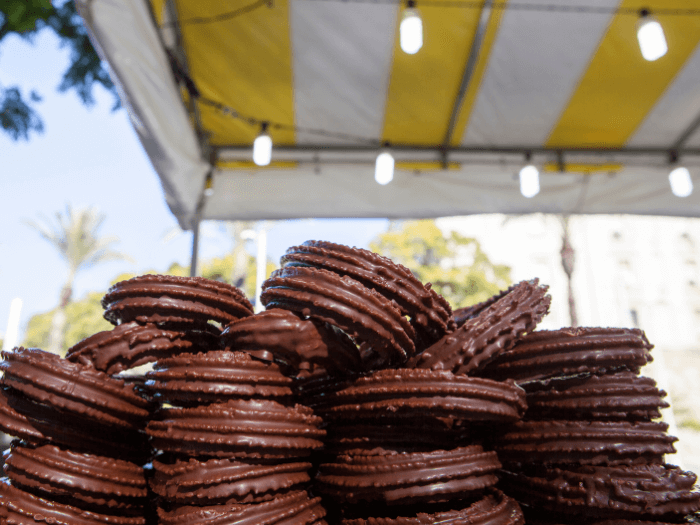



16. While breakfast at home is common in many cultures, in Spain, it is not. Spanish people are more likely to start their day at a cafe or bakery. They’ll enjoy freshly made churros or croissants with coffee or hot chocolate.
17. Caffeine lovers need to remember these facts about Spain. When you order one, it is common for the waiter to bring a small cup of espresso-like coffee, which is then topped up with milk in front of you. It will create a frothy, creamy texture that is perfect for sipping.
18. The word tortilla in Spain might differ from what you’re used to. It refers to an omelet made with potatoes and onions. So don’t expect to see the flatbread made from cornmeal commonly found in Mexico. This Spanish national dish can be found in restaurants and homes across the country.
19. Beware, this fun fact about Spain is a little dirty. In many Spanish bars, throwing dirty napkins, olive pits, and other food waste on the floor is common practice. This tradition dates back centuries and is considered an acceptable way to dispose of waste in these informal settings.
20. You might already know that Spain hosts Tomatina. It’s also considered the world’s biggest food fight. Thousands of people hit the streets yearly to hurl tomatoes at one another.
21. One of the well-known facts about Spain is that it is known for producing many types of fruit, such as oranges and lemons. But you might be surprised to learn that the country is the only European country that grows bananas. They originate from the Canary Islands and are a popular export.
22. Do you know where the world’s oldest restaurant is? According to the Guinness World Records, it’s in Spain. More specifically, Madrid.
The Sobrino de Botín is currently listed as the world’s oldest restaurant, as it has operated since 1725. It features some delicious traditional Spanish cuisine, including its signature dish of roast suckling pig.
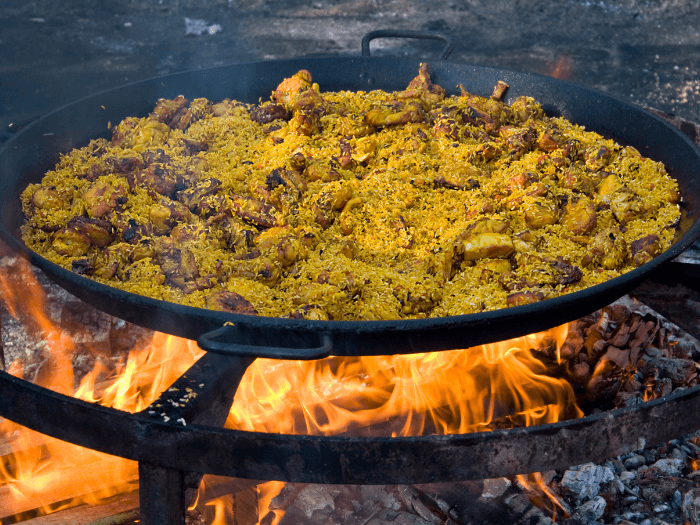



23. You might think paella is the national dish of Spain. But if you ask the locals, they will tell you they consider it primarily a Valencian meal. The traditional rice dish is made with various meats and vegetables and is the most famous meal to hail from the region.
24. If you’re visiting Spain on New Year’s Eve, remember these facts about Spain. When the clock strikes midnight, you’ll want to pop 12 grapes into your mouth. This tradition is said to bring good luck for the coming year and is practiced by many Spaniards every year.
25. You’ll be shocked to learn that Spain produces most of the world’s olive oil. In fact, it accounts for 45.5% of global production. The country creates three times as much olive oil as Italy and four times as much as Greece. The majority of this olive oil comes from the southern region of Andalusia.
26. Spain is not only the world’s largest producer of olive oil, but it’s also the second-largest wine manufacturer. With over three million acres of vineyards, Spain bottles various wines, from dry reds to sweet whites.
27. Only Cyprus surpasses Spain in the highest number of bars per inhabitant. There is one bar in the country for every 129 people. One of the well-known facts about Spain is that it has a vibrant bar culture. These establishments are known for their lively atmosphere, delicious tapas and drinks, as well as friendly locals.
Cool Facts About Spain
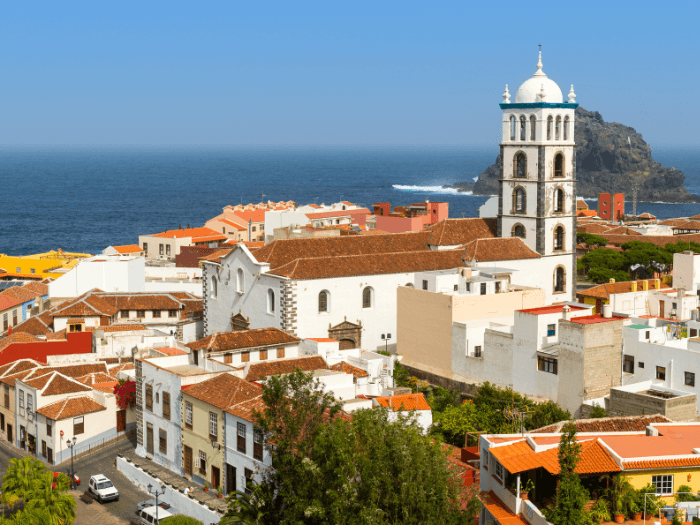



28. The highest mountain in Spain is Mount Teide. It stands at 4,066 yards and is found in the Canary Islands. It’s also an active volcano and a popular destination for hikers and nature lovers.
It hosts breathtaking views of the surrounding landscape and unique geological formations. Mount Teide makes for an excellent spot for tourists. They can soak up the sun and relax on the nearby beaches.
29. The national flower of Spain is the red carnation, known as “Clavel” in Spanish. It is primarily grown in the regions of Andalucía and Aragón. The flower is known for its bright color and fragrant scent.
It is also a symbol of love and passion in Spanish culture and is often used in weddings and other celebrations. You’ll also find it in the country’s many parks and gardens.
30. Another one of the most interesting facts about Spain is that the only monument to the Devil in the world is in Retiro Park, Madrid. It depicts the Devil as a fallen angel.
It is a famous destination for tourists and locals who admire its intricate details and unique design. Retiro Park is also popular for picnics, walks, and other outdoor activities.
31. On the topic of the Devil, the Basque country language is notorious for being difficult to learn as it includes multiple dialects. According to regional folklore, the Devil tried to master the language but gave up.
32. The Basque country has many festivals, including the famous Running of the Bulls. But you’ll also find Semana Grande, which takes place in August every year. It includes dancing, folk music, and many rural sports.
33. Spain has been the biggest donor of organs in the world for 15 consecutive years. It is a testament to the country’s strong healthcare system and commitment to saving lives. Spain’s organ donation program is considered one of the best in the world and is responsible for saving many lives over the years.
34. If you lose a tooth in Spain, don’t plan on a visit from the Tooth Fairy. The Tooth Fairy tradition in many Spanish language countries features a mouse. Raton Perez will scurry under your pillow and replace your teeth with a treat or coins. This take on the Tooth Fairy has even ended up in advertisements and films.
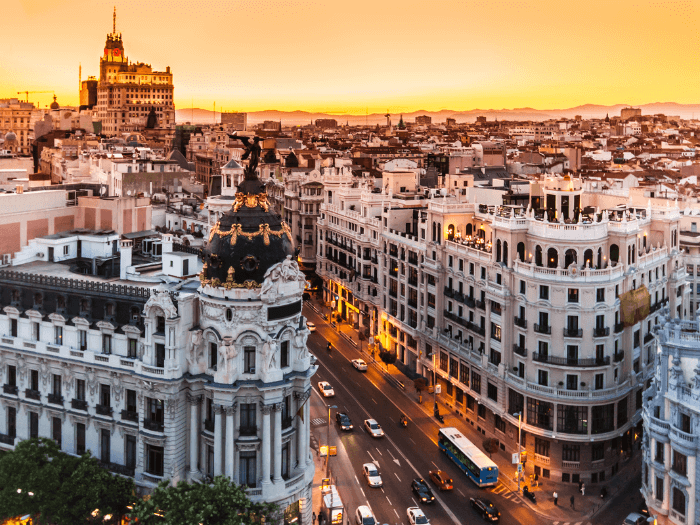



35. The Spanish Christmas Lottery is not just any lottery. It has been part of Spanish culture since 1812, making it one of the oldest lotteries in the world.
What sets it apart is the scale. Approximately 75% of the population participates in the lottery yearly. The total prize money often reaches billions of Euros. Talk about a Merry Christmas!
36. Star Wars fans will know these Spain fun facts. Seville’s Plaza de España featured in “Star Wars: Episode II Attack of the Clones.” The plaza also served as the backdrop for the planet Naboo.
Millions of Star Wars fans worldwide have visited the iconic location to revel in the plaza’s unique blend of Renaissance and Moorish Revival architecture.
37. It’s true. Nudity is legal in Spain. Before you leave your hotel in your birthday suit, it doesn’t mean it’s considered appropriate in all settings. The Spanish government has established guidelines for public nudity.
It includes avoiding areas where it may be deemed inappropriate, such as schools, hospitals, and places of worship. It’s more common on Spanish beaches where there is a more relaxed attitude towards nudity.
38. Spain is not only a beautiful country, but it’s also one of the healthiest European countries. Spain boasts the second-highest life expectancy among OECD countries.
Citizens are known to live long, healthy lives. Women tend to outlive men. They have an average life expectancy of 86 years, compared to men’s 80 years.
39. Female entrepreneurship is rising in Spain, and it’s positively impacting the country’s economy. During the five years following the Global Financial Crisis in 2008, female entrepreneurs set up 40% of new businesses in the country. The trend reflects a larger shift towards gender equality in Spain.
40. “Don Quixote” is considered a masterpiece of world literature that has endured for centuries. Written by the Spanish author Miguel de Cervantes in 1605, it is widely regarded as the first modern novel.
Its influence can be seen in countless works of literature and art that followed. Don Quixote tells the story of a nobleman who becomes convinced that he is a knight and sets out to right the wrongs of the world, often with hilarious results.
41. Spain is a world leader in renewable energy, and its commitment to wind power is a significant part of that. In 2013, wind turbines generated nearly 54,000-gigawatt hours of electricity in the country, making it the country’s primary source of electricity.
Remember These Spain Facts
How many of these fun facts about Spain did you know? It can be easy to go down a rabbit hole and learn about events such as the Camino de Santiago or the glorious coastline featuring the Mediterranean Sea.
But some of the best fun facts about Spain are about its rich history, delicious food, and quirky trivia featuring Tooth Fairy mice and devil monuments.
PIN FOR LATER
